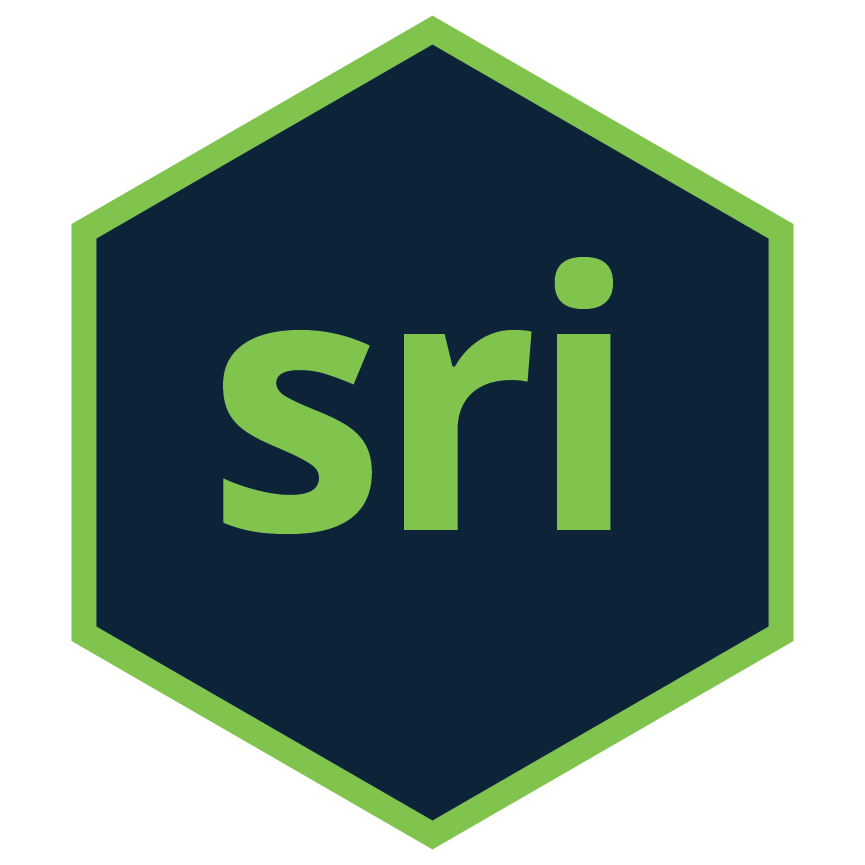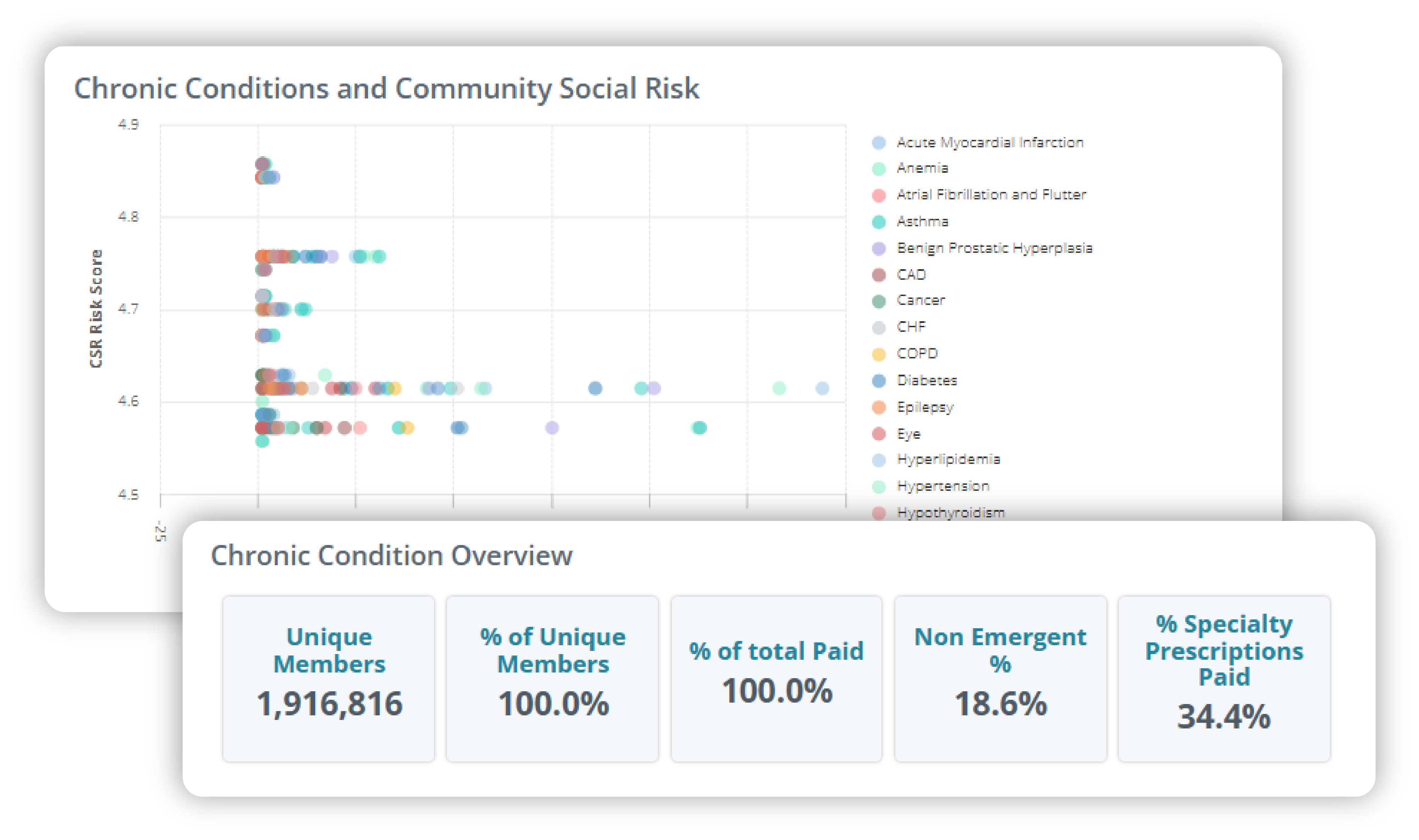Blueprint:
As the healthcare industry shifts toward value-based care models and intensifies focus on health equity, ensuring you address the unique needs of your population becomes essential for improved patient outcomes—as well as operational efficiency and financial stability.
Before you can address those needs, however, you need to pinpoint and understand them.
Enter: social risk data.
Social risk describes an individual’s susceptibility to adverse situations within the broader social conditions (social determinants of health (SDOH)) that are directly tied to poor health outcomes. These conditions could include housing instability, food insecurity, lack of transportation access, limited digital connectedness, and low health literacy rates.
Social determinants of health are broad forces impacting everyone, while social risk is an interaction of specific individual factors.
This video explains a nuanced approach to social risk that is essential to effectiveness and identifies where ACOs and Medicare Advantage plans can shift strategy to make better use of social risk data.
Social risk analysis is crucial for understanding the broader context of individual and community well-being, as it integrates information about social determinants of health, clinical data, and socioeconomic forces. Data informing social risk analysis is often spread out across disparate sources and is often incomplete—impeding healthcare organizations from seeing a full picture of an individual’s health.
To accomplish information integration and ensure better outcomes, payers, providers and community-based organizations must be willing to communicate, collaborate, and innovate. When SDOH data is combined with other data sources, like claims and clinical data, gaps and inequities are surfaced more readily, and action can be taken to remediate the risks.
press release


The companies are joining forces to launch a first-of-its-kind Social Risk Insights program focused on measures and outcomes, built on MedeAnalytics’ Health Fabric™, leveraging social risk data and delivering actuarially verified intervention opportunities to improve health outcomes and reduce costs.
Members/patients on average only spend around 20% of their lives annually in the care of clinicians. If you are only collecting and analyzing data when they are under your supervision, you’re only accessing a fraction of the information you need to make smart outreach and intervention decisions. Let’s see what happens when social risk data is applied:
Coordinated community outreach
Streamlined access to necessary social services and reduced health inequities
Targeted and individualized care plans
Increased satisfaction and compliance from members/patients
Population segmentation and risk analysis
Enhanced capability for early intervention and improved outcomes
Care quality improvement
Strengthened value-based care contracting and maximized reimbursements
Strategic resource investment and allocation
Reduced healthcare costs and business performance
The potential savings for identifying and addressing social risk is staggering. Holistically addressing the social and medical needs of high-need, high-cost patients can improve their health outcomes and produce significant healthcare savings by reducing expensive healthcare services such as ER visits and hospitalizations.
According to various studies outlined in a Commonwealth Report, providing non-emergency medical transportation (NEMT) to low-income people or those with certain chronic conditions can increase the receipt of outpatient, preventative care, thereby circumventing more expensive forms of care. In one study, the ROI of diabetes wound care patients was $792/patient/month in avoided Medicaid costs because of NEMT. Similarly, the ROI for dialysis patients was $3,423/patient/month.
John, a diabetic male in his 70s and on Medicaid, lives alone on a 3rd floor apartment outside of town. He doesn't have a car and has had more trouble walking lately. He sometimes misses his doctor appointments and can’t always get his meds on time.
Missed 4 appointments in 2 months; did not fill 2 prescriptions; went to the ER 3 times in 6 months for uncontrolled wounds.
Lack of transportation; potential food insecurity; limited community resources.
Work with care management team to set up NEMT and prescription delivery; set up home health visits to monitor condition and medication compliance; investigate grocery/meal delivery options.
Due to improved access to transportation and healthy food, John is making his medical appointments, taking his prescriptions regularly, and is remaining out of the ER.
A successful social risk strategy must include integrated data from across sources and apply risk stratification and predictive modeling to match individual needs with targeted solutions. With the right tactics and tools on your side, you can illuminate where and how social risk is impacting your populations to improve individual and community outcomes as well as business performance.
Risk stratification
Identify patients at high risk for complications, readmissions, and reduced compliance; target patients for preventative care; predict future costs to better allocate resources
Care coordination & management
Connect patients with community resources that meet their needs; tailor patient engagement and education strategies; foster communication and transparency across care settings
Provider performance measurement
Compare providers against geographically relevant benchmarks to reduce health disparities; better align incentive programs that reward reduction in social risk
Quality & outcome improvement
Flag gaps in care for targeted interventions; focus on preventative care for high-risk populations; measure healthcare equity, not just quality
Member engagement & retention
Address patient education, outreach and incentive programs (i.e. discounted gym memberships, nutrition consults) to those with high social risk; effectively communicate preventative care reminders
Cost management
Target high-risk patients for screenings and immunizations; identify and predict high-cost utilization to avert or divert care to other settings; foster wellness program adoption that incentivizes preventative care and healthy lifestyles
Population health
Find and address gaps in community-based partnerships with local organizations; optimize resource allocation to communities that need it most
Network design
Pinpoint where to place healthcare facilities or services to maximize impact; align provider networks to the socio-economic needs of communities; assess opportunities to expand access through transportation or telehealth services
infographic
Harnessing the power of Social Risk Insights
Understand social risk benefits health systems and health plans by offering critical insight into the severity and chronicity of social adversity that each individual is facing—and how that is shaping their health outcomes.
EBOOK
Shaping health outcomes with social risk insights
If you're only analyzing member data when they're under your supervision, you’re only accessing a fraction of the information you need. Get ahead of the curve by integrating clinical, claims and SDOH data to assess social risk.
data sheet
See how SRI integrates SDOH data and traditional healthcare data to illuminate where and how social risk impacts populations to improve individual and community outcomes and business performance.
article
Introduction to social risk: What healthcare leaders need to understand
What does 'social risk' mean and is it all that different from SDOH? Most importantly, what should healthcare leaders understand about social risk?
Want to talk with one of our experts?
Explore more on this topic
Using analytics to integrate physical and mental health in whole-person healthcare
In the realm of healthcare, it is paramount to view physical and mental health as inherently interconnected aspects of wellbeing…
Read on...Is what you’re asking for really what you need? Tips for getting to the root of the problem—and finding the right solution
As a lifelong data enthusiast and healthcare leader, one of my primary objectives is to help transform a reservoir of…
Read on...Proactively predicting ER visit trends with augmented analytics to improve revenues, asset utilization and patient outcomes
Mission critical emergency departments (EDs) are the most valuable revenue generating asset for hospitals. While visits decreased during the pandemic,…
Read on...Will adopting a risk-based approach with augmented analytics support care gap closure?
A common challenge for healthcare systems is how to properly segment its patient populations based on risk profiles and co-morbidities. Doing this well ensures a high quality of care delivery and superior patient outcomes.
Read on...








